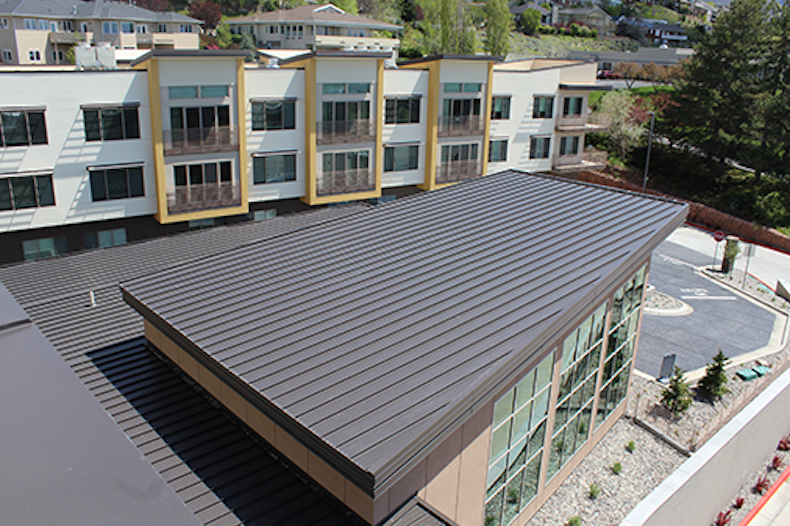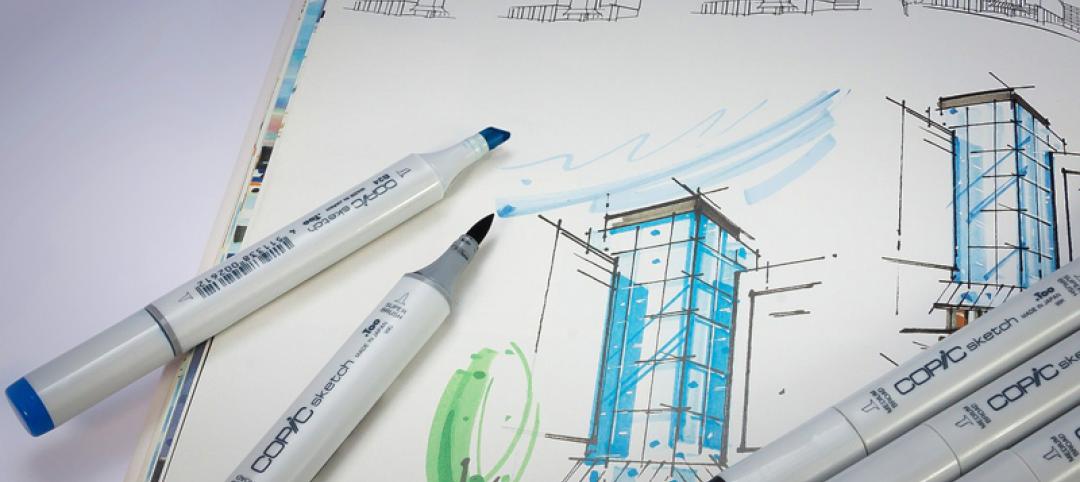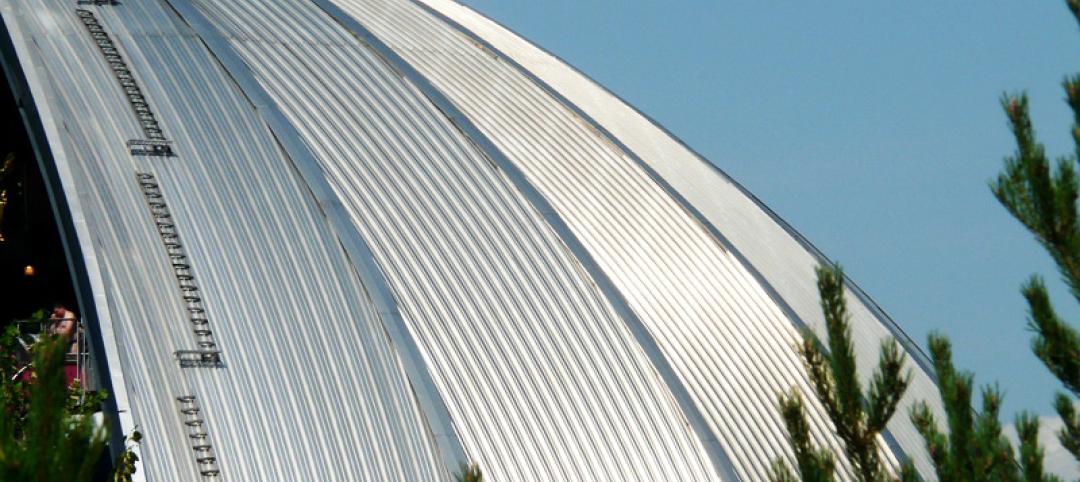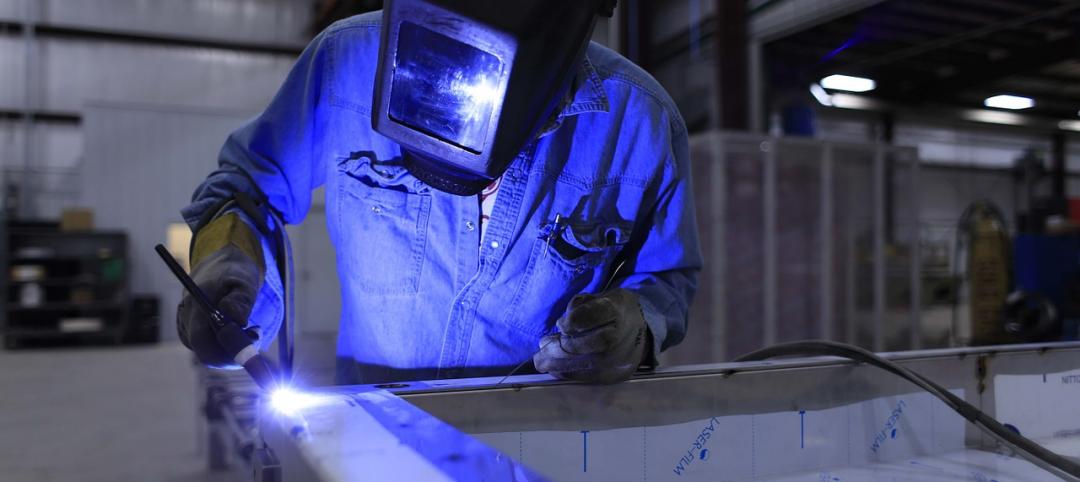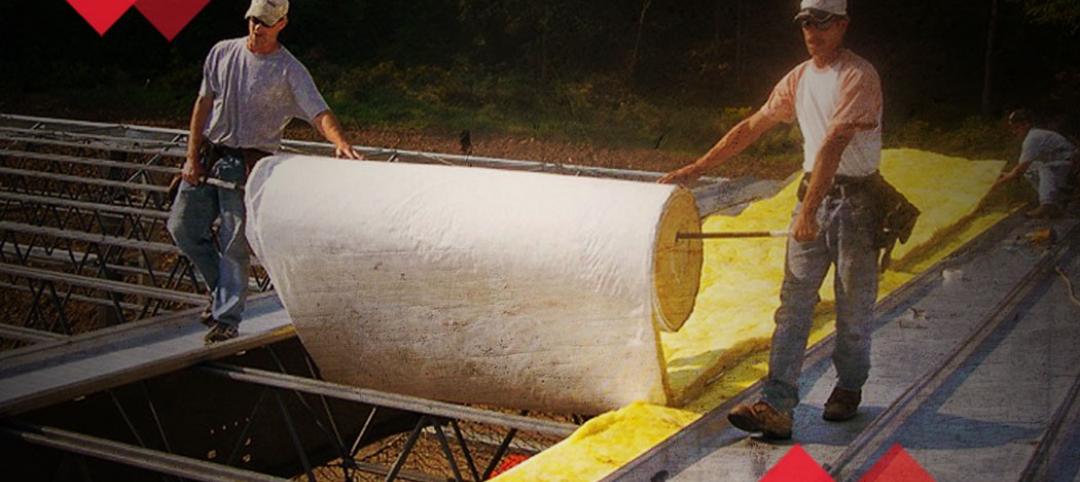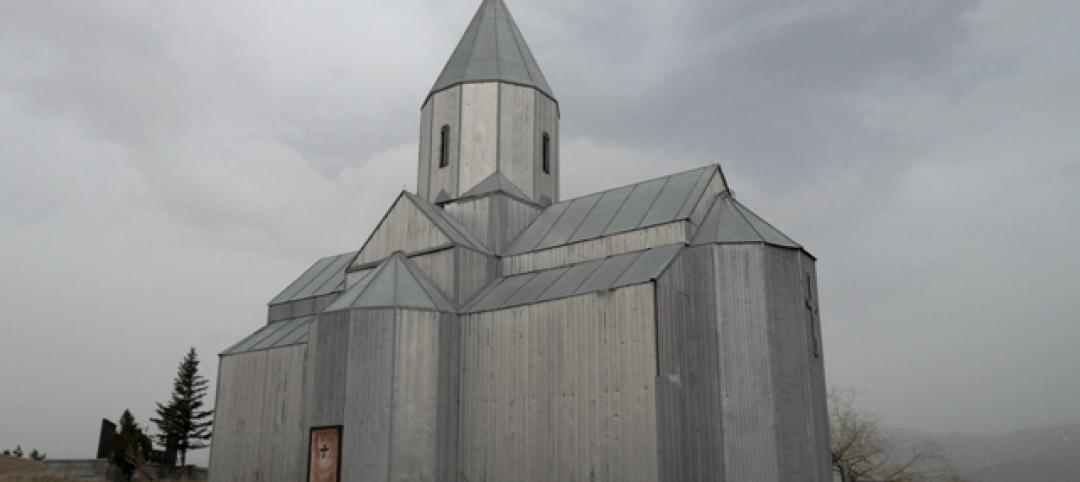Many large, commercial, low-rise buildings such as warehouses, big box retail stores, agriculture structures, aviation facilities, etc. often don’t benefit from steeply-sloped roofs the way residences and small commercial buildings might. This is because a steep roof slope would add unwanted height and uneccesary construction cost.
Instead, these buildings are more appropriately built with so-called “flat roofs.” This is actually is a misnomer since the roofs are, in fact, “low-slope roofs” which the the National Roofing Contractors Association (NRCA) defines as any roof with “a slope at or less than 3:12.” Anything steeper is considered a “high-slope roof.” With this in mind, let’s look at some key points to consider when designing and constructing a low-slope roof.
Low-Slope Roofing Materials
When it comes to selecting low-slope roofing products, there are generally three fundamental choices:
- Asphalt/ Bituminuous Products: The traditional commercial roofing norm for many years, the use of asphalt/bituminous products has dwindled as newer, more appealing options have emerged.
- Flexible Membrane Roofing: This roofing material can be made from a variety of types of plastic/polymer based materials (commonly known as EPDM, TPO, PVC, or others). Rolls of the selected membrane are laid out on the roof structure and secured in place either with properly spaced mechanical fasteners (screws with large washers) or with a continuous layer of adhesive.
- Metal Roofing: Sometimes overlooked, metal roofing is suitable for different roof slopes. Many metal roofs that use a standing-seam system are rated for use on roofs with a pitch as low as ½:12.
When considering which type of roofing material to use for a building project, there are a number of significant differences that illustrate why metal roofing is often preferred.
Engineered For Superior Performance
Standing-seam metal roofing is designed and engineered specifically for use on low-slope roofs as it meets a number of performance requirements:
- Water resistance: Water and other forms of precipitation don’t penetrate through metal and or through properly formed standing seams where the metal panels are joined. That is the reason they can tolerate such low slopes, allowing the water to drain away slowly and predictably without leakage.
- Rigidity: The rigid nature of metal means that the opportunity for ponding (i.e. standing water on a roof) is eliminated. This is not always the case with asphalt/bituminous or membrane roofing systems.
- Drainage: Water on a metal roof typically flows to the roof’s edge where it meets with gutters and downspouts that carry the water away from the building. Other roofing systems rely on interior drainage piped inside the building. This takes up space and has the potential to leak water inside the building and cause damage.
- Wind Resistance: Standardized uplift testing of metal roofing shows that it can perform as well or even better than membrane systems that are either mechanically-fastened or fully-adhered.
- Durability: Because of it’s engineered design and use of high quality coatings, the most cited advantage of metal roofing is its long-term strength and durability. That translates to a longer roofing life—50 years or more compared to the other two roofing types that are only rated for 20 or 30 years.
- Puncture Resistance: Low-slope roofing tends to get walked on and may also take direct abuse from hail and other hazards. Metal roofing is more resistant to punctures than asphalt/bituminous or membrane roofing and better able to tolerate foot traffic and hail without getting punctured.
- Construction/ Installation Ease: Metal roofing panels are sized and pre-fabricated to match the building where they are being installed. That typically means it takes less time in the field to place and install metal roofing compared to other types of roofing. Further, installation of metal panels is not restricted by temperature or other weather conditions since they can easily tolerate a wide range of either and still perform as intended. On low-slope roofs, their surface is also easy to walk on without risking falls or other safety hazards.
Cost-Effectiveness
Using metal roofing on low-slope roof systems has been shown to be quite cost effective in a number of ways:
- Fewer labor hours as a result of the ease of installation saves money during construction.
- Competitive material costs, particularly if the metal roofing is part of a total metal building package from a single manufacturer.
- Minimal maintenance requirements and aversion to rusting, mold growth and decay that save the building owner money over time.
This all adds up to a very favorable life-cycle cost.
Considering the performance, cost and life-cycle benefits of metal roofing panels, this material should always be considered as a viable option for low-slope roofing systems. Metal roofing manufacturers like MBCI can not only help you select the right metal roofing products, but can also provide the information and resources needed to ensure they’re installed properly.
View examples of low-slope metal roofing projects and contact your local MBCI representative to start your project today.
Related Stories
Sponsored | Metals | May 21, 2015
How architects can tap into the expertise of their metal roof manufacturer, part 3
But how does the architect ensure that he or she gets this essential information on every project?
Sponsored | Metals | May 18, 2015
Six questions to ask before purchasing a door
A set of six questions to help you confidently purchase the right door.
Sponsored | Metals | May 11, 2015
How to get the most out of a metal roof
‘Low-maintenance’ is not the same thing as ‘no maintenance.’
Sponsored | Roofing | May 11, 2015
How architects can tap into the expertise of their metal roof manufacturer, part 2
Here are three things metal roof manufacturers can do to help the architect
Sponsored | Metals | Apr 27, 2015
How architects can tap into the expertise of their metal roof manufacturer, part 1
Architects are not only expected to be experts in every field, they must also be part lawyer, arbitrator and magician
Sponsored | Metals | Apr 24, 2015
Are metal roofs lightning magnets?
According to The Metal Construction Assocition, a metal roof will not make lightning more likely to strike, but it may make a lightning strike less dangerous if it occurs. That’s right, less dangerous, not more.
Sponsored | Metals | Apr 3, 2015
The inherent sustainability of steel
The steel in a metal building system may contribute to points for Recycled Content under the USGBC’s Leadership in Energy and Environmental Design (LEED) system.
Sponsored | Metals | Mar 16, 2015
Top FAQs for Metal Building Insulation
Here are some of the most important issues for keeping fiberglass insulation working at its maximum.
Sponsored | Metals | Mar 10, 2015
Metal Building Systems: A Rising Star in the Market
A new report by the Metal Building Manufacturer's Association explains the entity's efforts in refining and extending metal building systems as a construction choice.
Sponsored | Metals | Feb 25, 2015
Why churches are being built of metal
Affordability and speed of building are important factors.


